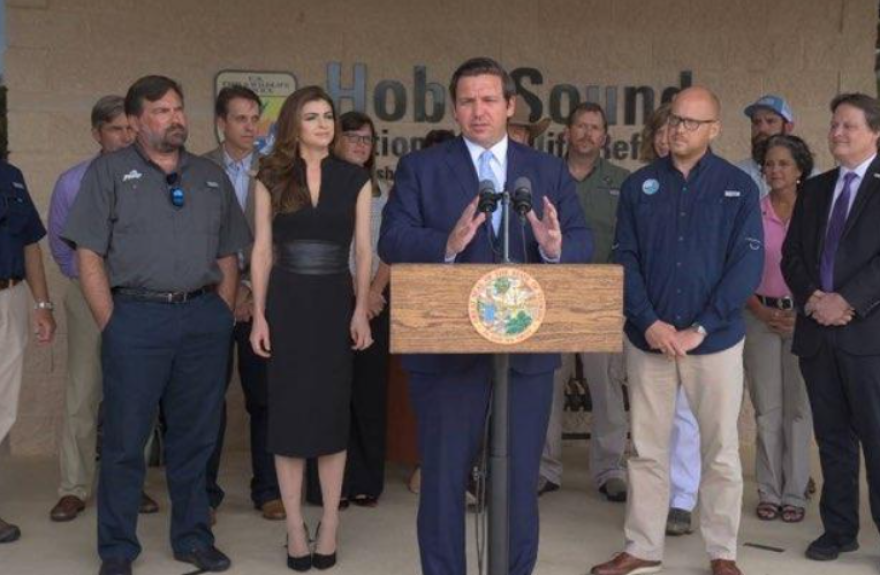A thick layer of blue-green gunk is sitting on the surface of a shallow lake off Highway 27 in North Tallahassee. Scientists call this gooey substance, cyanobacteria. It can produce toxins and can be dangerous for anyone or anything that is exposed to it, for too long.
That's the case at Lake Jackson.
A once 4,000-acre hot spot for fish and vegetation including hydrillas, eelgrass, and lily pads has been covered in the algae.
WFSU spoke with local fisherman Jose Garcia on Tuesday. He hasn’t been to Lake Jackson in awhile, but stopped by to check on it on that day.
"There used to be an abundance of different varieties of species out here and that’s what I liked when I used to come out to Lake Jackson," said Garcia. "You just never knew what you might catch.”
In addition to the algae, the water level is low because of a draining sinkhole. But, Garcia stated he could remember when he could go out and enjoy the lake and its beauty, before the algae took over.
Jackson isn't the only lake that’s been overrun by algae blooms.
In August, the Florida Department of Health issued a health alert for residents in Palm Beach County, warning them to stay clear of Lake Okeechobee.
FDOH said water samples from the lake revealed algal toxin levels so high, it was unsafe for people and their pets to drink or swim; in areas of the lake where there are visible blooms. It’s the latest in an ongoing battle against algae that the state has been fighting for more than four years.

A solution?
Nasrin Alamdari has been studying the algal blooms while working as an assistant professor at FAMU-FSU’s College of Engineering.
“I was thinking that I can come up with a statewide tool that can apply in any freshwater lake to see what's going on in terms of the cyanobacteria," Alamdari explained to WFSU in a recent interview.
Alamdari's studies show that most blooms form when agricultural and residential fertilizers used on plants wash into Florida’s waterways. The bacteria feeds off the nutrients released by the fertilizers, forming blooms that slowly strip all the oxygen out of lakes and any other bodies of water.
The Florida Department of Environmental Protection has awarded Alamdari and her team, a $300,000 dollar grant to develop a tool that predicts when and where the next algae blooms are going to occur, in hopes of potentially preventing them.
“So far we have developed tools that show the cyanobacteria in all the lakes," said Alamdari. "You can see every day or every seven days and you have an option to see how much cyanobacteria is in the lake.”
Why is this important?
While plants, fish, and other wildlife face the greatest immediate danger, Floridians might want to take heed. Experts say if algae blooms continue, fishermen like Jose Garcia, might soon find they have far fewer places left to fish. In a place like Florida where fishing, boating, and recreation make up a significant part of the state’s tourism industry; that’s especially important.
That’s one reason Gov. Ron DeSantis created the Blue-Green Algae Task Force in 2019 to better preserve and protect the water from pollutants.

“The focus of the task force is to support key funding and restoration initiatives and make recommendations to expedite nutrient reductions in Lake Okeechobee and downstream estuaries," DeSantis said during the opening ceremony.
While the state and its researchers have made progress toward trying to find ways to reduce the spread of algal blooms, it’s also costing taxpayers millions.
DeSantis recently revealed the state has spent a total of $50 million over the last four years to fund new technology to help monitor, respond, and predict where the next algae bloom could occur.
“I'm confident their work will help lead to significant progress and the protection of water quality. Particularly as we continue to address the harmful algal blooms that have plagued so much of our state.”
The latest data from DEP reveals the department has collected at least 17 harmful algal bloom samples from multiple counties across the state, to include Palm Beach, Polk, and Broward counties; with more still pending.





